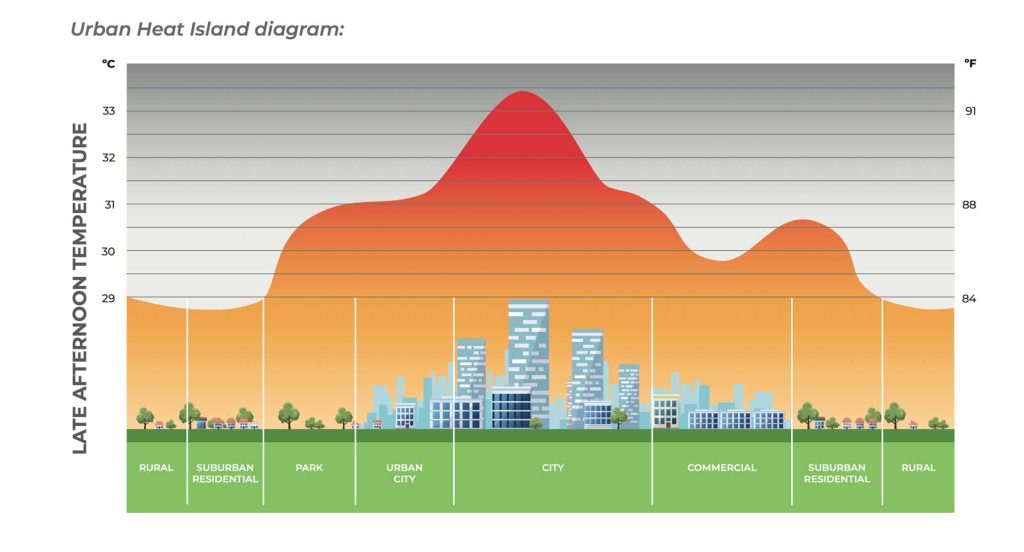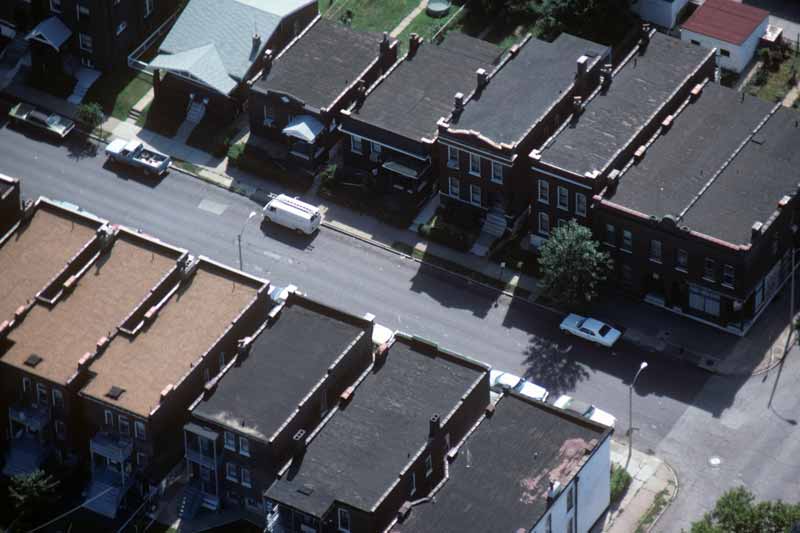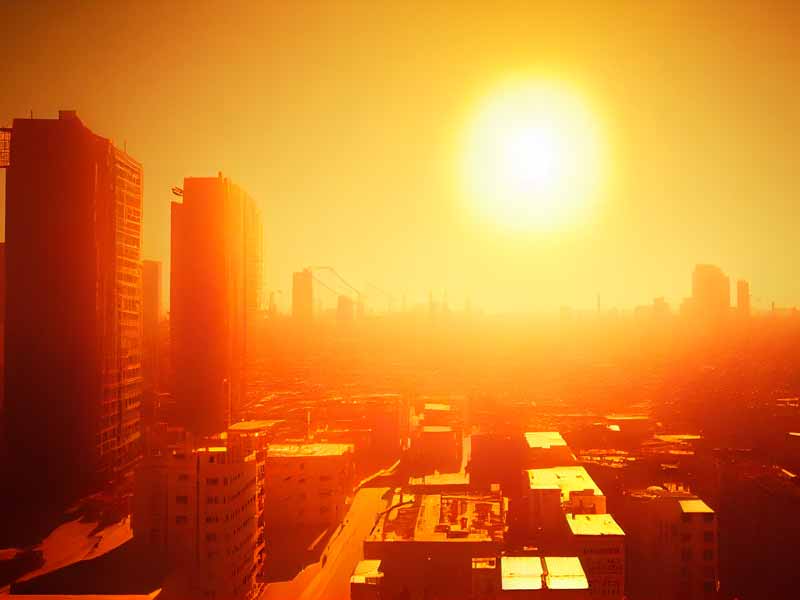The Urban Heat Island Effect (UHIE) can make life very difficult for anybody trying to negotiate the heat of the city. But what IS the Urban Heat Island Effect? And what can be done to make summer living a lot more pleasant for people in built up areas.
What Is The Urban Heat Island Effect?
The Urban Heat Island Effect describes a phenomena whereby ambient air temperatures are higher in built up areas than in nearby rural areas due to hard surfaces such as concrete and brick absorbing heat during the day. Meaning that for people living and working in towns and cities, the air is several degrees warmer than for those of us in the countryside. As well as increased energy consumption in summer, due to the need for air conditioning, higher summer temperatures can have an adverse effect on health and on productivity.

Imagine being a landscaper, a street vendor or a construction worker engaged in physical activity when temperatures are soaring. When conditions pose a risk to life, work must be brought to a temporary halt.
Similarly, the very young, the very old and the more vulnerable members of the community whose bodies are unable to regulate their temperature, are in danger of becoming seriously ill through external factors that they have no control over.
According to Dr Helen Beddow in her article from August 2022, excessive heat has financial implications for city based organisations.
“The impact of heat stress on employee health has been linked to lower productivity and increased absenteeism and has big financial implications for businesses. To avoid negative impacts on employee health, employers will need to absorb costs from changing energy requirements and adapting buildings to cope with increased heat.”
How The Urban Heat Island Effect Impacts Upon Architecture
Does the Urban Heat Island Effect impact upon structures as well as people? Absolutely it does. Building materials expand in hot weather and metal components rust faster. This potentially puts a lot of strain on older buildings that were simply not constructed with climate change in mind.
Another effect of excessive heat is soil shrinkage. This can de-stabilise building foundations. Of course the UHIE is not the only contributor to this. Alternating dry spells and flooding also cause shrinking and swelling of the soil. The British Geological Survey (BGS) estimate that this is one of the most damaging geohazards in modern Britain and predicts that by 2070 almost 11% of our built environment will be adversely affected by subsidence caused by shrink-swell.
Fortunately, green roofs aid rainwater attenuation as well as helping to reduce urban temperatures.
What Causes The Urban Heat Island Effect?
Hard surfaces such as pavements, buildings and roads are better at absorbing and retaining heat than vegetation. Natural lawns, plants and trees are very good at cooling the air around them via a process called evapotranspiration. Evapotranspiration is the horticultural equivalent of sweating and its purpose is to prevent plants cooking in the sun. But it also has a very welcome side effect of moderating air temperatures.
When we consider the relative proportions of hard and soft surfaces in the city with those in more rural areas, it’s little wonder that air temperatures in town can be as much as 12 degrees higher than those in the countryside.

Brick Row Homes in St Louis, Missouri. These buildings absorb heat in summer and release it back into the environment, exacerbating the urban heat island effect. Imagine, if green infrastructre were improved with living roofs and more street trees, how much more comfortable residents would feel during the summer months.
Movement of air (or the lack of it) is also believed to contribute to the UHIE. The first thing any of us does when exposed to heat is to try and fan our bodies to cool ourselves down. Moving air helps evaporate sweat from our skin and reduces body temperature. Air flow is restricted by tall buildings and that’s not helpful in summer.
How Do Green Roofs Mitigate Against The Urban Heat Island Effect?
Green roofs effectively change heat retaining hard surfaces into areas of cooling vegetation. They cannot solve all of the problems in our cities, but they can certainly do a lot to help. As well as helping to cool the air around a buildings and across cities, the thermal mass of a green roof helps reduce the need for air conditioning within the building. Thus helping to manage energy costs and carbon emissions.
The paper published by T Susca et al, entitled Positive Effects Of Vegetation: Urban Heat Island And Green Roof makes fascinating reading. Researchers found a 2 degree difference in temperature between the most and least vegetated areas of New York City. Now that’s food for thought!
Discover More About The Benefits Of Green Roofs
How Do Green Roofs Save Energy?
Could Green Roofing Help Protect Our Seas Against Sewerage Spills?

